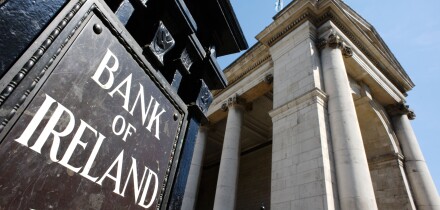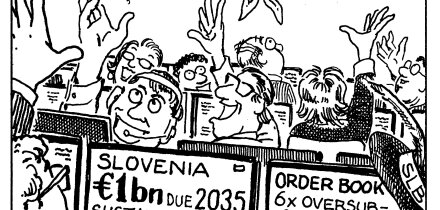It was Samuel Johnson who said "Depend upon it, sir, when a man knows he is to be hanged in a fortnight, it concentrates his mind wonderfully." Trading losses may not be up there with being hanged in a fortnight, but they can certainly concentrate the mind.
The Asian Crisis
Wrong-way exposure first became prominent in the Asian currency crisis of late 1997 and early 1998. Several major banks experienced significant credit losses caused by counterparty defaults rather than bad bets on the part of traders. A significant number of Asian corporations had issued hard currency debt while their revenues were mainly denominated in local currency. Many were sensible enough to hedge these exposures against a possible depreciation in their domestic currencies through the currency swap market. Perhaps even more impressive, they generally chose to place these swaps with western institutions that would not be unduly weakened by such a depreciation. This, of course, left the western dealers with an unacceptable open currency position that they needed to neutralize. In the end, many of them chose to lay off their positions with Asian financial institutions, creating a classic example of wrong-way exposure. The western dealers were paying Asian currencies to the financial institutions and receiving dollars or other group of seven currencies in exchange. As the economic crisis spread and Asian currencies depreciated dramatically, these currency swaps skyrocketed in value just as the credit worthiness of the Asian counterparties declined.
The Exception Not The Rule
I have said in the past, and I continue to believe, that such wrong-way exposure is the exception not the rule. Assuming most derivative users are hedging and not speculating, "right-way exposure" must be the norm. If a business has used derivative contracts to hedge, at least partially, against an unfavorable market event that ultimately causes it to fail, then its dealer counterparties will be out-of-the money on those contracts at the time of default. In this situation, there is favorable covariance between the value of the dealers' exposure and the health of the counterparty. Deteriorating credit quality triggered by the hedged event will coincide with falling or negative exposure on the hedges.
Given the size of the exposures, the credit history of the derivative industry is remarkably favorable. Even recognizing that derivative use has traditionally been concentrated in larger entities with above average credit ratings, I believe that much of this record must reflect favorable covariance between exposure and counterparty credit quality. That said, the Asian crisis was a clear wake-up call to the industry that wrong-way exposure must be taken seriously.
Some institutions, notablyJPMorgan, have proposed mathematically sophisticated approaches to this issue. These approaches tend to depend heavily, however, on limited data and uncertain modeling assumptions. While this research is intellectually interesting, I believe there is a simpler approach to capturing wrong-way exposure that is easier to implement, more transparent to risk managers and holds the promise of being very effective.
A New Approach
The proposed approach involves concentrating on the sensitivity of a counterparty's exposure to the individual market factors that determine that exposure. The first step is to simulate the exposure to each counterparty at multiple future points based on the evolution of all market factors along their expected paths. Call this the benchmark exposure profile. The next step is to add a series of controlled simulations in which only one market variable is perturbed in a specified way (e.g. raising the sterling LIBOR curve by two standard deviations above its expected level at each simulation date). The difference between a counterparty's credit exposure in this controlled simulation versus the benchmark exposure profile is a useful measure of the sensitivity of exposure to this directional move in the relevant market variable.
Of course, these sensitivity measures are in the form of a vector, specifically the difference in exposure between the two simulations at a series of future dates. It also is useful to derive a scalar measure that summarizes this sensitivity in a single number. That allows counterparties to be filtered and sorted based on comparison of these scalar expressions of market factor sensitivity.
A good candidate for this scalar measure of risk source sensitivity is the deviation from the benchmark exposure with the largest absolute value. While simple to implement, it has an easily understood interpretation. Storing this scalar exposure sensitivity for all risk factors affecting each counterparty would allow the system to respond to commands, such as to show all counterparties with peak exposure increases exceeding USD5 million from a two standard deviation decline in a given exchange rate. It also would allow these counterparties to be sorted from most sensitive to the least sensitive.
Monitoring wrong-way exposure on a routine basis requires an additional step. One or more "wrong-way market moves" need to be defined for each counterparty. For some counterparties these will be obvious, e.g. oil price declines for a petroleum extraction company or oil price increases for an airline. For others they will be far less obvious. Certainly, however, a decline in the value of a financial institution's native currency would be a logical candidate for a wrong-way market move. Once these are defined, a standard report can be generated showing all counterparties with wrong-way exposure sensitivity greater than USD5 million. If credit ratings are stored with each counterparty, this could be further restricted to counterparties below a given rating and sorted first by rating (worst first) and then by wrong-way sensitivity (largest first). The illustration below is an example of what such a report might look like.
| Swapco Inc. | ||||
| Wrong-Way Exposure Report | ||||
| Name | Rating | Risk Source | Direction | Sensitivity ($ Mill) |
| ABC Thai Bank | B | USD/THB | Down | $17.2 |
| XYZ Korea Bank | B | USD/KRW | Down | $12.0 |
| US Oil Drill | BB | WCT | Down | $14.6 |
| Japanese Bank 1 | BBB | JPY/USD | Down | $58.1 |
| International Airline | BBB | WTC | Up | $46.3 |
| Japanese Bank 2 | BBB | JPY/USD | Down | $15.9 |
| Date: 04/15/2002 |
I believe this fairly simple approach to wrong-way exposure reporting represents a significant advance. When implemented, it provides early warning as such exposures build up and allows timely preventive action on the part of credit risk managers.
This week's Learning Curve was written by David Rowe, group executive and v.p. for risk management at SunGard Trading and Risk Systems.





